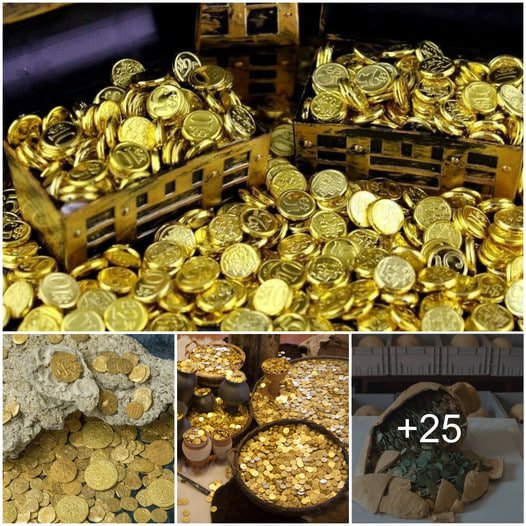The Pietroasele Treasure, also known as “The nesting hen and the golden chick”, refers to a collection of valuable gold items unearthed in 1837 from an old burial site in Pietroasele, located in Buzău County, Romania.
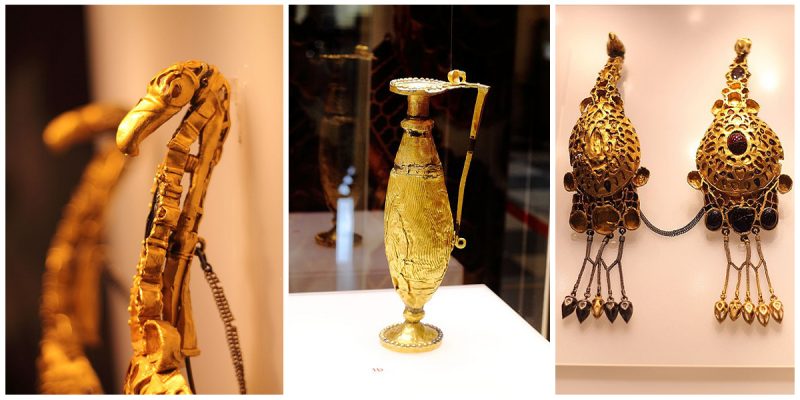
The valuable discovery was made by a pair of villagers from Pietroasele, Ion Lemnaru and his father-in-law Stan Avram, as they were working on quarrying limestone for a new bridge construction project.
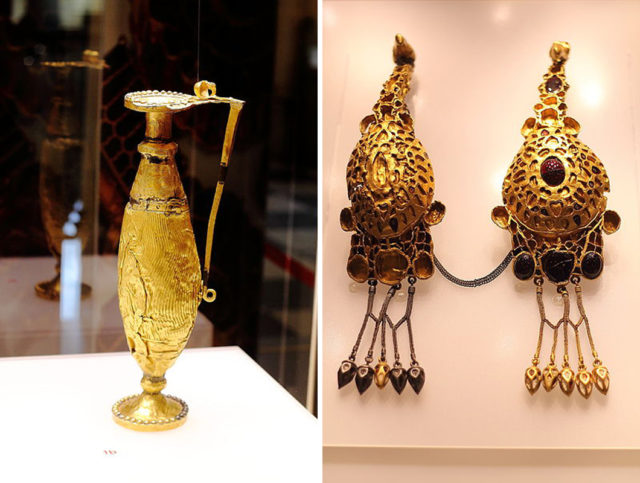
It was hailed as the most valuable gold treasure until Tutankhamun’s discovery.
The pair stumbled upon a stash of 22 valuable gold items, such as a sizable fibula shaped like an eagle’s head, a patera adorned with Gothic deity figures for offering libations, a spacious tray, a pitcher, a neck ring with mysterious Runic writing (referred to as the Ring of Pietroasele), and a duo of ornate necklaces.
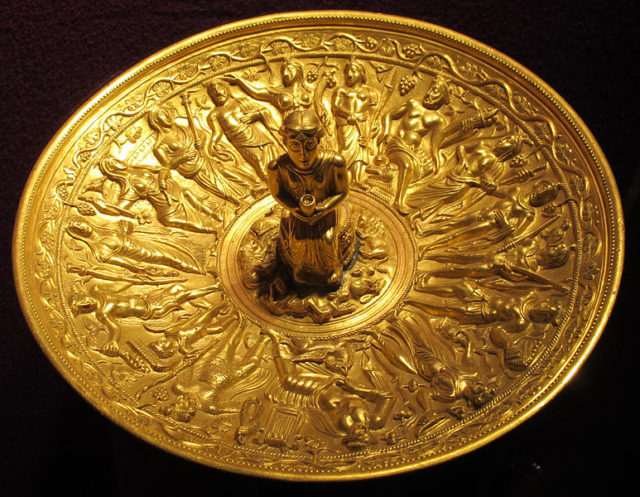
The stunning golden patera in the image. Image Source
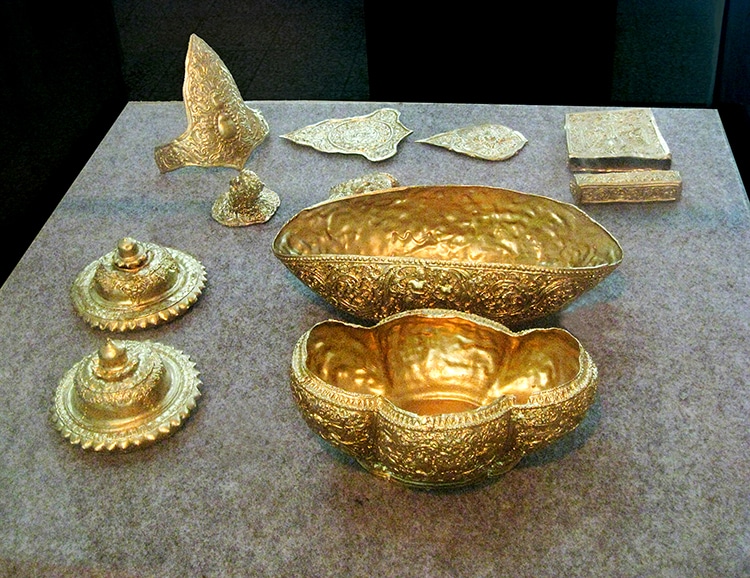
Middle fibulae in the shape of eagles were commonly worn by Gothic women in pairs. These intricate pieces of jewelry were often used to fasten garments together.
The news mentioned that a pair of farmers decided to hold onto the gold items and later sold them off to an Albanian entrepreneur known as Verussi. Verussi broke the objects into tinier fragments to make them more portable and simpler to conceal, ensuring that they wouldn’t be caught by the authorities while being transported.
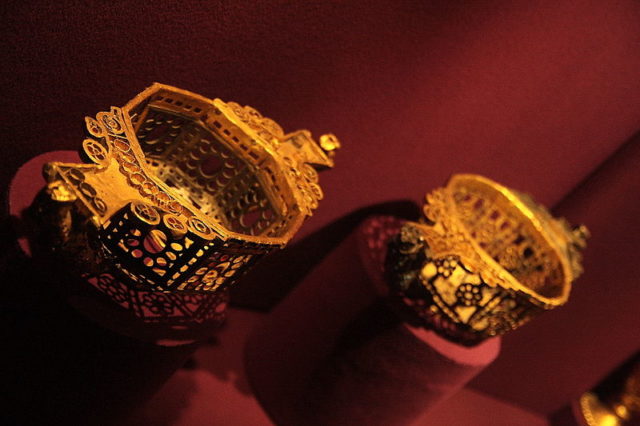
There were originally 22 items, but only 12 managed to survive. A year later, news of the treasure made its way to the authorities at the Inland Affairs Department, leading to the confiscation of the objects.
In 1917, the valuable treasure was transported to Russia for safekeeping when German forces were moving through Romania during World War I. It was eventually brought back to Romania in the 1950s.
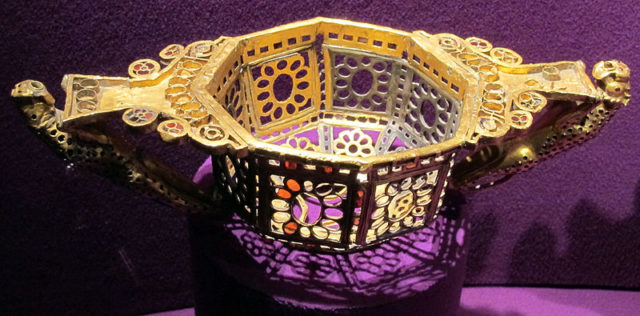
One of the most well-known examples of the polychrome style in Migration Period art. Image Source
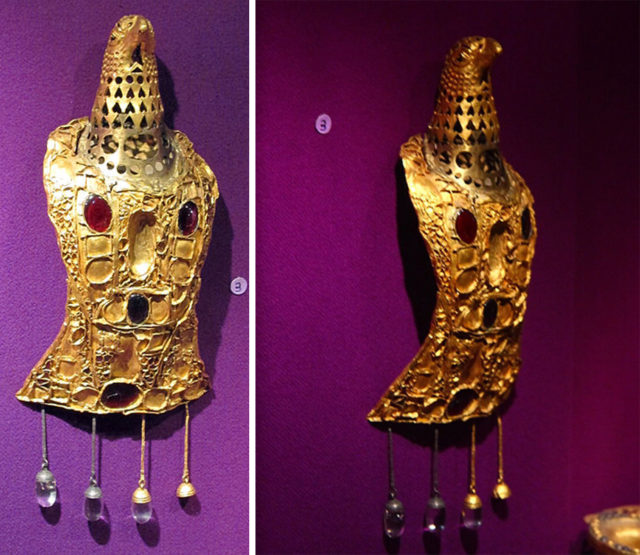
A fibula in the shape of an eagle has been discovered, believed to have belonged to the Visigoths. The gold object dates back to the late 4th century AD to early 5th century AD, and was buried in the middle of the 5th century.
The drawing of the Pietroassa ring by Henri Trenk in 1875 showcases Gothic religious beliefs beyond just artistic representations of deities. Runic inscriptions on the Ring of Pietroasele, also known as the Buzău torc, provide insight into the pre-Christian religious practices of the Goths. Believed to have roots in Roman-Mediterranean culture, the symbols on the ring have been linked to the Elder Futhark alphabet.
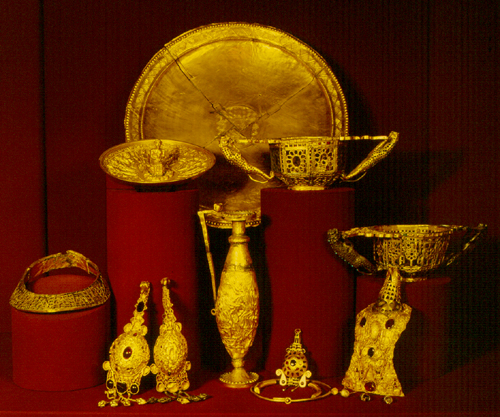
Due to damage suffered soon after it was found, experts are unable to definitively decipher the inscription, leading to multiple attempts to reconstruct and interpret its meaning. Some believe it may have been designed to offer magical protection to whoever wore it.
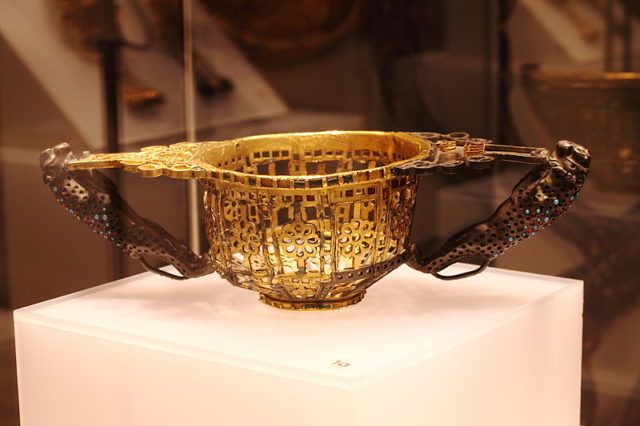
The majority of the valuable treasure can be viewed at The National Museum in Bucharest, with photo credit given. Here’s another fascinating tale of treasure: The Ringlemere Cup, one of Britain’s oldest treasures ever discovered. Out of the twenty-two pieces weighing 27 kg, only twelve totaling 18.795 kg have survived, and they are currently being preserved at the National Museum of Romanian History in Bucharest.

